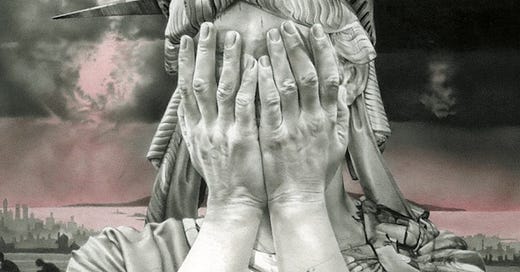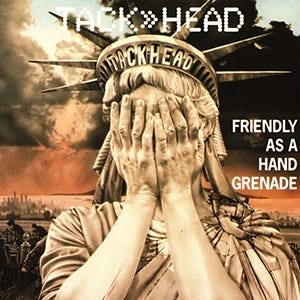👋 Ciao, I'm Giulia Blocal, your street art insider. This is a *special edition* of Beyond the Walls, a monthly deep dive into street art, graffiti, off-the-beaten-path travel, and a bit of my life in between.
While the newsletter on the 1st of every month will always remain free for everyone, I’ve started writing these occasional paywalled editions as a way to thank those of you who help keep this space alive and open to all.
In this *special edition*, I want to explore a subject that’s both personal and political: what happens when art created on the margins is appropriated without credit and passed off as someone else’s.
It echoes a conversation I opened in a newsletter from 2023:
And so, here’s the story of a globally celebrated muralist borrowing the voice of a fiercely independent anarchist from the underground, without acknowledgment, and actively silencing those who try to correct the record.
Enjoy — and see you in your inbox on August 1st with the regular edition of this newsletter.
Giulia
Editor’s note: After this article was published, Judith—whom I know personally—reached out and asked me to share her side of the story. Fair enough. Here’s the official statement she provided: “It’s not so surprising we landed on similar imagery — the Statue of Liberty is a widely recognized symbol, much like the Eiffel Tower, and has likely been reinterpreted hundreds of times.”And just a quick reminder: these monthly editorials are my personal commentary on recent street art news, they’re opinion pieces, not police investigations. 😉Art with a message, but not with credit.
On July 4th, Dutch muralist Judith de Leeuw (JDL) unveiled a monumental mural in Roubaix, France, depicting the Statue of Liberty with her face buried in her hands, as if weeping in shame.

In interviews and social media posts, she explained that the work was inspired by the cruelty she witnessed in a news report: a migrant being arrested and dragged away while his child stood frozen in the doorway.
“I cannot witness this kind of injustice without responding,” she said in an interview with Hyperallergic, where she framed the piece as a deeply personal reaction to the brutality of U.S. immigration policies.
The mural struck a chord. It was bold, emotive, and highly shareable. Within days, the image had gone viral — millions of views, thousands of shares, and attention from international media.
It quickly began circulating among anti-Trump circles, turning into a symbol of resistance—and, in turn, attracting a wave of hate-filled comments from Trump supporters. Scrolling through JDL’s Instagram, reading threats and violent rhetoric, I was struck by how exposed artists can become in moments like this.
But amid the outrage and the praise, there was one major problem, the one I want to address in this newsletter: the image wasn’t hers.






